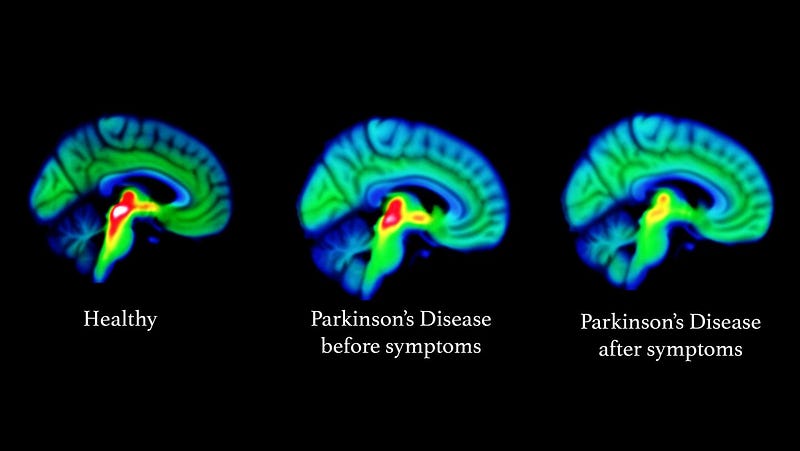In recent years, the advancement of technology has led to remarkable breakthroughs in the healthcare industry. One such innovation is the development of smartwatches, which have now evolved beyond simple timekeeping devices.
With a plethora of health monitoring features, these wearable gadgets have the potential to revolutionize healthcare, particularly in the early detection of certain diseases.
This article delves into the exciting possibilities that lie within smartwatches, focusing on their potential to aid in the early detection of Parkinson’s Disease.
Understanding Parkinson’s Disease
Parkinson’s Disease is a progressive neurodegenerative disorder that affects the central nervous system. It primarily impacts the motor functions of individuals, leading to symptoms such as tremors, muscle rigidity, impaired balance, and slow movement.
The disease is caused by the degeneration of dopamine-producing neurons in the brain, which leads to a decrease in dopamine levels and results in the characteristic symptoms of Parkinson’s.
Challenges in Early Detection
Parkinson’s can often take years to diagnose as the symptoms — slow movement, involuntary shaking, and stiff muscles, to name a few — can develop so slowly over time.
The disease is currently incurable, though if diagnosed early enough the quality of life of patients can be bolstered by medicine, therapies, and in some cases surgery.
Some early signs of Parkinson’s disease may include:
- Tremors or involuntary shaking
- Coordination and balance impairments
- Loss of sense of smell
- Altered walking patterns (shuffling or leaning forward)
- Fixed facial expressions
- Voice tremor or softer voice
- Cramped and smaller handwriting
- Sleep problems (restless legs and others)
- Rapid eye movement sleep disorder (a potential predictor)
Dr. Kathryn Peall, a clinical senior lecturer in the NMHII, stated that Parkinson’s disease is a progressive movement disorder resulting from the depletion of brain cells that utilize dopamine. However, at the time of clinical diagnosis, approximately 50%-70% of these brain cells would have already been lost. This poses a challenge in achieving early detection of the disease.

Despite the challenges, early detection of Parkinson’s Disease is paramount for several reasons:
- Timely Intervention: Early diagnosis allows for the timely implementation of appropriate treatments and interventions. Medications and therapies can be initiated to manage symptoms and slow down the disease’s progression, potentially improving the patient’s quality of life.
- Disease Management: Early detection enables healthcare professionals to work closely with patients to develop personalized care plans. This includes physical therapy, speech therapy, and other interventions tailored to the individual’s needs.
- Psychological Support: An early diagnosis provides the opportunity for patients and their families to seek psychological support and come to terms with the diagnosis. It allows them to plan for the future and make informed decisions about their healthcare.
The Role of Smartwatches in Parkinson’s Detection
A study conducted by researchers from the UK Dementia Research Institute and Neuroscience and Mental Health Innovation Institute at Cardiff University gathered data from 103,712 individuals who wore medical-grade smartwatches for a seven-day period between 2013 and 2016.
The smartwatches measured the average speed of each participant and compared the data with a group of individuals already diagnosed with Parkinson’s disease. The AI model employed in the study was able to predict a timescale.
The leaders of the study are optimistic that this innovative technology could potentially serve as a future screening tool, enabling earlier detection of Parkinson’s compared to current processes. This advancement could lead to improved access to early treatment for patients.
Smartwatches equipped with advanced sensors and machine learning algorithms have the potential to monitor various health parameters continuously.
Smartwatches could spot Parkinson’s seven years before key symptoms appear, study suggests
By analyzing a user’s movements, heart rate, and other vital signs, these devices can provide valuable insights into their overall health, including potential signs of Parkinson’s disease.
1-Motion Analysis
Smartwatches with built-in accelerometers and gyroscopes can track the user’s movements throughout the day. These sensors can detect subtle changes in gait, hand movements, and tremors, which are common indicators of Parkinson’s disease.
Machine learning algorithms process the data collected from these sensors, enabling the device to distinguish between normal movements and those associated with the disease.
2-Resting Tremor Monitoring
Resting tremors are one of the hallmark symptoms of Parkinson’s disease. Smartwatches, with their continuous monitoring capabilities, can detect and record these tremors even during a person’s daily activities or while they are at rest. This data can be valuable for physicians in making an accurate diagnosis.
3-Heart Rate Variability (HRV)
Heart Rate Variability, or HRV, is the variation in time between consecutive heartbeats. Research has shown that individuals with Parkinson’s disease often exhibit abnormal HRV patterns.
Smartwatches can measure HRV over time, allowing for the identification of irregularities that may signal the presence of the disease.
4-Sleep Pattern Analysis
Sleep disturbances are common in Parkinson’s disease. Smartwatches equipped with sleep-tracking features can monitor sleep patterns, detecting disruptions and abnormalities that might indicate potential neurological issues.
Remote Patient Monitoring
Remote Patient Monitoring (RPM) is a transformative approach in healthcare that leverages smartwatches and telemedicine platforms to monitor patients’ health remotely. When applied to individuals at risk of developing Parkinson’s disease, RPM offers a myriad of benefits that significantly enhance patient care and outcomes.
- With smartwatches equipped with motion sensors, heart rate monitors, and advanced health tracking features, RPM provides continuous monitoring for individuals at risk of Parkinson’s disease. By analyzing this data, healthcare providers can detect early signs of Parkinson’s disease, even before visible symptoms appear.
- RPM facilitates the creation of personalized care plans tailored to each individual’s specific needs. This personalized approach maximizes the effectiveness of interventions and ensures that patients receive the most appropriate care for their unique circumstances.
- With RPM, patients become more engaged in their own healthcare journey. Smartwatch feedback motivates patients to actively manage their health, leading to improved adherence to treatment plans and better treatment outcomes.
- RPM has the potential to reduce healthcare costs associated with managing Parkinson’s disease. By detecting and addressing issues early, patients are less likely to require costly emergency care or hospitalizations.
- RPM not only benefits patients but also empowers caregivers who play a crucial role in the care of individuals with Parkinson’s disease. Real-time health data allow caregivers to stay informed about the patient’s condition, enabling them to provide better support and assistance.

The Future of Parkinson’s Detection with Smartwatches
The potential of smartwatches in the early detection of Parkinson’s disease is immense, and ongoing research and development continue to refine the technology.
As these devices become more sophisticated, their ability to identify early-stage Parkinson’s symptoms with precision and accuracy will significantly improve.
Collaboration Between Tech Companies and Healthcare Professionals
For smartwatches to become reliable tools in the early detection of Parkinson’s Disease, collaboration between technology companies and healthcare professionals is vital.
It stands as a living testament to the adage that “two heads are better than one.” It showcases the power of synergy, where the convergence of disparate expertise culminates in innovations that have the potential to transform the landscape of healthcare.
Together, they herald a future where smartwatches not only detect diseases like Parkinson’s at their inception but also empower healthcare professionals to deliver proactive, personalized, and data-driven care, ultimately leading to improved patient outcomes and a healthier society at large.
Privacy and Ethical Considerations
The integration of smartwatches into healthcare holds immense promise, but it must be accompanied by a strong commitment to privacy and ethical considerations. Smartwatch manufacturers and healthcare providers have a responsibility to protect user data, ensure informed consent, and comply with relevant regulations.
By taking these measures, the industry can foster trust, encourage widespread adoption, and harness the full potential of smartwatches in promoting healthier lives while safeguarding individual privacy rights.
Conclusion
The integration of smartwatches into healthcare holds immense promise, and their potential to aid in the early detection of Parkinson’s Disease is truly exciting. By leveraging the advanced sensor technology in smartwatches, medical professionals can analyze data patterns to identify the onset of Parkinson’s at an early stage, leading to improved patient outcomes and a better understanding of the disease.
However, it is crucial to recognize that smartwatches are not a replacement for traditional diagnostic methods. Instead, they can serve as valuable supplementary tools that complement the expertise of healthcare professionals.
As technology continues to advance, the future of smartwatches in healthcare looks incredibly promising. With ongoing research, development, and collaboration, we can envision a world where these wearable devices play a significant role in the early detection and management of various medical conditions, making a positive impact on global health and well-being.
Remember, the future is bright, and the possibilities are endless in the ever-evolving field of wearable technology. Embrace the potential of smartwatches, and together, we can pave the way for a healthier tomorrow.
I appreciate your Attention. Your suggestions or feedback related to it are more than welcome in the comment section.
Your Smartwatch Helps Detect Parkinson’s Disease Earlier. (bit.ly/3q1Bzsb)Tweet this?
As the author of this content, I originally published this article on the Medium platform, under the publication titled “Being Well,” on the 26th of July, 2023.











Leave a Reply